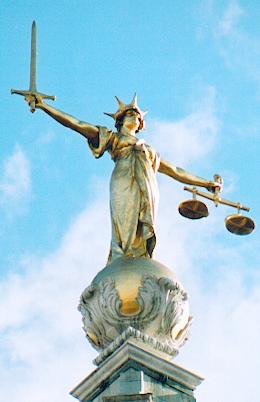The Spell seems to be Working
Statutory Warning: This post has nothing to do with
Superman. But hell, why don’t you understand, he interferes everywhere.
 |
| Image Courtesy: Google |
Sreesanth, the fast bowler, who once, was part of the Indian
Cricket team, whose alleged relationship with bookies put him behind bars for
weeks without trials, who hails from Kerala, the South of India, who is the
tangible example for the North Indian bias towards anything and everything
southern, got bail.
At last, the boy came back home and ate homemade pickles.
 |
| Image Courtesy: Google |
In fact, cricket has lost its grounds based on this degraded
controversy, at least, in my eyes. I do not watch cricket on TV any more. Moreover,
I do not think I would be alone in this tryst. However, the masses, that I see
watching the game in galleries, make me think about cultural addiction and
social dementia. We forget that in the name of the game the managements and
players played fraud. We forget better things in life, like helping socially
backward communities and poor children; instead, we sip from the intoxicating
charm of cricket. As a society, perhaps, this attitude is the root cause of the
still remaining epidemic of poverty and malnutrition in India. Not ‘cricket’,
but the attitude, the inclination to hold on to any form of addiction. This
behavioural pattern reflects in individual level as well. Gudka, pan-parag,
toddy, alcohol, ganja, charas, and opium, are only a few names in the long list
of drugs, the ‘common man’ in India is addicted to. What about prostitution?
What about self-pity?
Yes, all these moral and psychological diseases exist in
varying degrees within the cultural genome of the nation. Did I forget
corruption? No, in fact, I do not want to mention corruption as an isolated
instance of addiction. The political community and bureaucracy seem to possess
an unimaginable and indelible taste for corruption. The level of this addiction
surpasses any sense of normalcy, and often bribes become part of the daily
routines of government offices. If you want passport, the procedure requires
your clearance certificate from any police cases. Take it an example; there are
forms to fill in the police station, to declare you free of any charges. As a
token of your appreciation of the services provided, at the end, you should pay
a small amount of INR 200 or USD 3.44. For INR 200, you could buy two chicken
biriyani or at the current price, one kilo chicken. The amount is not very small,
but still, everyone pays it; and for that matter, this amount is not that big
either, when passport is concerned. It ends up as a pure reversal of the
‘normal’.
 |
| Image Courtesy: Google |
Corruption is not exactly the city centre, if we take that
analogy; it is the city itself. If one looks for a pavement and parking lot for
a convenient observation on the monument of corruption, one is making a
mistake. The monument is visible, of course, but that is not exactly what you think
it to be. You demolish the city centre. Someone else will build another, the very
next day. Ending corruption has been the constant devoir, almost all the
political parties and NGOs concurred upon. Great many times, they demolished
the city centre. Corruption still exists in every office, school, college,
university, and organization, in one form or another, though. No one looks at
the bigger picture. Corruption is the city itself, and no isolated city centre.
That was what I said; I would not say corruption is an isolated instance of
addiction. Instead, corruption is the result of many other reasons, from
poverty to self-pity. The city is connected with many roads. Many roads lead to
the city of corruption.
Compared to rape, murder, or burglary, corruption is a graver
crime, because it provides suitable environment for all other crimes. In New
Delhi, a young girl student was raped and murdered in what could be called the
epitome of brutality. The police could not prevent it, and neither could it
save the girl. Child rapes became unstoppable, recently, and the authorities
could not stop it either.
However, something was different lately. The masses grew
extremely discontent on how the investigations went. The matters gathered even
foreign attention. The emotional bondage of Indian culture with ethical Ram and
moral Gandhi flared up and rose in violence on the streets. Consequentially,
the police force of the capitol came under criticism. There is nothing odd or
unusual in pointing the finger on the police. According to a newspaper report
on April 29, 2013, Delhi Police Commissioner, Mr. Neeraj Kumar was on the verge
of losing his job, due to this unrestrained criminal orgy, and the people’s
demonstrations against incapable policing.
Instead of cleaning the city of corruption, the Delhi
police, quite quickly found another option; demolish some minor buildings. They
implemented their plan to save themselves by taping calls and sneaking into
some of the cricketers’ life. Not even religion attracts this many number of
people as the game of cricket does, in this nation. Therefore, the
investigation was supposed to get some serious attention from the public and to
redeem the police department from accusations of corruption and inefficiency.
Everything worked according to plan, and the police arrested
the players under charges of spot fixing. It all went a very professional
manner. Delhi police arrested three players from one of the IPL teams,
including an international player.
S. Sreesanth was the hot shot among the others, the
cricketer with international reputation and a potential game turner in the
upcoming cricket world cup. Just after the arrests, Delhi police, under Neeraj
Kumar, participated in a reality show that, in spite of the lack of any
credible evidences, raised the hairs on the neck and arm, and everyone felt gooseflesh.
Considering the efficiency in the working of the system in
covering up corruption, Keralites never expected Sreesanth back at home. Nevertheless,
it seems the “Akram, Bakram, gili…gili…” spell, I casted in the previous post,
worked quite efficiently. Anyway, I think that’s enough.
Note:
The newspaper referred in this article is
available on this link: http://www.ndtv.com/article/india/delhi-police-commissioner-neeraj-kumar-to-go-this-week-as-capital-seethes-over-attacks-on-children-s-360569
It’s strange, though, how none of the national media reflected
upon this possibility, during the spot fixing scandal.







Comments